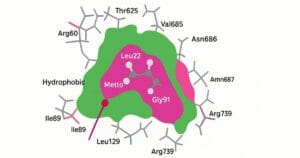
COMPETITIVE EXAM MCQs SERIES of ENVIRONMENTAL SCIENCE for UGC-NET/JRF, SLET, ARS, GATE, and other entrance tests – Statistical Approaches and Modelling in Environmental Sciences: Skewness and Kurtosis with Statistical Moments.
Syllabus Outline
- Importance of moments in describing data distribution.
- Overview of moments: first, second, third, and fourth moments.
- First moment: Mean (measure of central tendency).
- Second moment: Variance and standard deviation (measure of dispersion).
- Third Moment: Skewness (measure of asymmetry in data distribution). Types of skewness: positive (right-tailed), negative (left-tailed), and zero (symmetrical). Interpretation of skewness in environmental data (e.g., pollutant concentrations, rainfall). Applications in assessing environmental data normality and outliers.
- Fourth Moment: Kurtosis (measure of peakedness or flatness of the data distribution. Types of kurtosis: leptokurtic (peaked), platykurtic (flat), mesokurtic (normal). Significance of kurtosis in environmental datasets (e.g., extreme weather events, pollutant spikes). Calculation and interpretation of kurtosis values.
- Relation Between Moments, Skewness, and Kurtosis.
This quiz contains concept-based, the most frequently asked 25 MCQs of “Statistical Approaches and Modelling in Environmental Sciences: Skewness and Kurtosis with Statistical Moments”. Each question has a single correct/most appropriate answer.
*****
1. In environmental data analysis, the first moment about the origin represents:
A) Variance of the dataset
B) Arithmetic mean of the dataset
C) Skewness coefficient
D) Standard deviation
2. The second central moment in environmental statistics directly measures:
A) Mean
B) Variance
C) Skewness
D) Kurtosis
3. The standard measure of kurtosis for a normal distribution is:
A) 0
B) 1
C) 3
D) -1
4. In environmental monitoring, the third standardised moment measures:
A) Central tendency
B) Variability
C) Skewness
D) Kurtosis
5. For temperature data showing platykurtic distribution, the kurtosis value is:
A) Greater than 3
B) Equal to 3
C) Less than 3
D) Equal to 0
6. The fourth central moment is primarily used to calculate:
A) Mean deviation
B) Standard deviation
C) Coefficient of variation
D) Kurtosis
7. The excess kurtosis for a mesokurtic distribution equals:
A) 3
B) 0
C) 1
D) -3
8. When analysing water quality parameters using Karl Pearson’s coefficient of skewness, the formula (Mean – Mode)/Standard Deviation yields -0.75. This suggests:
A) Moderate positive skewness
B) Strong negative skewness
C) Moderate negative skewness
D) No skewness
9. In ecological diversity studies, a leptokurtic species abundance distribution indicates:
A) Flatter than normal distribution with shorter tails
B) Higher peak than normal with heavier tails
C) Perfect normal distribution
D) Bimodal distribution pattern
10. For greenhouse gas emission data, if β₂ = 5.2, the distribution is classified as:
A) Platykurtic
B) Mesokurtic
C) Leptokurtic
D) Normal
11. In forest biomass estimation, if the third moment about the mean μ₃ = 125 and σ³ = 64, the coefficient of skewness is:
A) 1.95
B) 0.51
C) 1.25
D) 2.08
12. When comparing two environmental datasets with identical means and variances but different kurtosis values (3.8 and 2.1), which statement is correct?
A) Both have identical risk profiles
B) The dataset with kurtosis 3.8 has more extreme values
C) The dataset with kurtosis 2.1 has higher variability
D) Kurtosis difference is negligible
13. In climate change studies, if temperature anomaly data shows μ₄/σ⁴ = 2.1, the excess kurtosis is:
A) 2.1
B) -0.9
C) 0.9
D) 5.1
14. For biodiversity index calculations, when the distribution is platykurtic with excess kurtosis of -1.2, the actual kurtosis coefficient is:
A) 4.2
B) 1.8
C) 2.2
D) -1.2
15. For soil contamination assessment, when using Galton’s measure of skewness with P₁₀ = 2.1 ppm, P₅₀ = 4.8 ppm, P₉₀ = 12.3 ppm, the coefficient equals:
A) 0.67
B) 0.47
C) 0.78
D) 0.34
16. In ecosystem productivity analysis, if the fourth standardised moment β₂ = 1.8, what type of distribution is indicated?
A) Normal distribution
B) Platykurtic distribution
C) Leptokurtic distribution
D) Bimodal distribution
17. For environmental risk assessment, comparing two pollutant datasets where Dataset A has skewness = +2.1 and Dataset B has skewness = -0.8, which interpretation is correct?
A) Dataset A has a more symmetric distribution
B) Dataset B has a longer right tail
C) Dataset A has a higher probability of extremely high values
D) Both datasets have similar risk profiles
18. For urban heat island studies, temperature data with moments: μ₁’ = 28°C, μ₂ = 16, μ₃ = -32, the coefficient of skewness is:
A) -0.5
B) 0.5
C) -2.0
D) 2.0
19. In marine pollution assessment, if contaminant concentration follows leptokurtic distribution with β₂ = 6.8, the excess kurtosis equals:
A) 6.8
B) 3.8
C) 9.8
D) -3.8
20. For multivariate environmental quality assessment, when comparing kurtosis measures across different pollutants, which statement about relative kurtosis interpretation is most accurate?
A) Higher kurtosis always indicates better environmental quality
B) Kurtosis comparison is only valid for identical measurement scales
C) Relative kurtosis helps identify pollutants with extreme concentration events
D) Kurtosis values are independent of measurement units
21. In biodiversity assessment using Shannon-Weaver index across multiple ecosystems, if the standardised fourth moment of diversity indices β₂ = 2.1 and the distribution follows Pearson Type IV, what can be inferred about ecosystem stability?
A) High stability with predictable diversity patterns
B) Moderate stability with platykurtic diversity distribution
C) Low stability with potential for extreme diversity events
D) Unstable ecosystem with symmetric diversity patterns
22. According to the latest IPCC Working Group III report (2024), climate model ensemble outputs for precipitation extremes show systematic bias in higher-order moments. When regional climate models exhibit excess kurtosis ranging from +2.1 to +4.7 compared to observational data (excess kurtosis ≈ 0), this bias primarily affects:
A) Mean precipitation forecasting accuracy
B) Seasonal precipitation cycle prediction
C) Extreme event frequency and magnitude estimation
D) Spatial correlation of precipitation patterns
23. Assertion (A): In environmental data analysis, when applying the method of moments for parameter estimation of the gamma distribution to model pollutant concentrations, the theoretical skewness coefficient equals 2/√α, where α is the shape parameter.
Reason (R): For a gamma distribution with shape parameter α and scale parameter β, the skewness is independent of the scale parameter because standardisation eliminates the effect of β while preserving the shape characteristics determined by α.
A) Both A and R are true, and R is the correct explanation of A
B) Both A and R are true, but R is not the correct explanation of A
C) A is true, but R is false
D) A is false, but R is true
24. Assertion (A): In quality control of environmental monitoring systems, when sample size n > 30, the sampling distribution of skewness coefficient follows approximately a normal distribution with mean zero and variance 6/n for data drawn from symmetric populations.
Reason (R): The central limit theorem ensures that all sample statistics, including higher-order moments like skewness and kurtosis, converge to normal distributions regardless of the parent population distribution when the sample size is sufficiently large.
A) Both A and R are true, and R is the correct explanation of A
B) Both A and R are true, but R is not the correct explanation of A
C) A is true, but R is false
D) A is false, but R is true
25. Assertion (A): For environmental quality index using weighted averages of multiple parameters, if individual parameters follow distributions with different skewness values, the composite index skewness can be approximated using the delta method when parameter correlations are moderate (|ρ| < 0.7).
Reason (R): The delta method provides a first-order Taylor approximation for functions of random variables for estimation of moments for transformed variables, but its accuracy decreases when the transformation function exhibits high nonlinearity or when input variables have strong dependencies.
A) Both A and R are true, and R is the correct explanation of A
B) Both A and R are true, but R is not the correct explanation of A
C) A is true, but R is false
D) A is false, but R is true
*****
Previous: Measurement of Central Tendency and Dispersion
Next: Concepts of Probability Theory
References
- Gupta, S.P. (2020) Statistical Methods, Sultan Chand & Sons, 44th edition.
- Barnett, V. (2004) Environmental Statistics: Methods and Applications, Wiley, 1st edition.
- Manly, B.F.J. (2008) Statistics for Environmental Science and Management, Chapman and Hall/CRC, 2nd edition.

